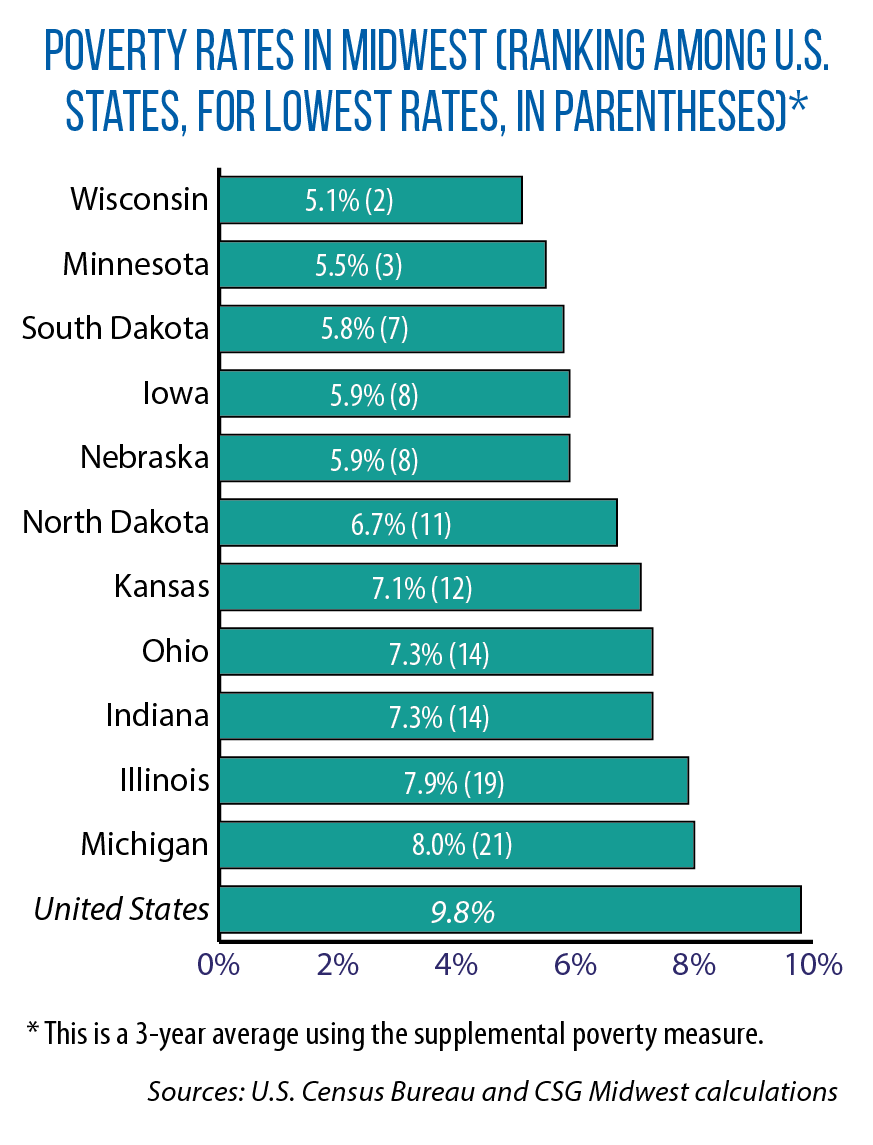Number of people living in poverty spiked in 2022; rates are relatively low across Midwest
Every state in the Midwest has a poverty rate lower than the U.S. average, and Wisconsin and Minnesota have among the smallest percentage of residents living at or below the poverty threshold set by the federal government, the latest data from the U.S. Census Bureau show.
 When using the supplemental poverty measure, or SPM, the rates in this region range from a low of 5.1 percent in Wisconsin to a high of 8.0 percent in Michigan. The SPM has become a preferred way of gauging poverty because it takes into account several factors that the “official” poverty measure does not — for example, government programs that assist low-income families, geographic variation in housing expenses, state and federal taxes, and work and medical expenses.
When using the supplemental poverty measure, or SPM, the rates in this region range from a low of 5.1 percent in Wisconsin to a high of 8.0 percent in Michigan. The SPM has become a preferred way of gauging poverty because it takes into account several factors that the “official” poverty measure does not — for example, government programs that assist low-income families, geographic variation in housing expenses, state and federal taxes, and work and medical expenses.
Among U.S. states, California has the highest percentage of residents living in poverty (13.2 percent).
Part of a U.S. Census Bureau study released in September, the state-by-state data are based on poverty rates in 2020, 2021 and 2022. The same study also compares changes in national rates between 2021 and 2022, a period in which the number of U.S. residents living in poverty increased significantly, as measured by the SPM. That’s due in large part to the end of pandemic-
related government policies that had expanded the reach of child tax credits, earned income tax credits and health coverage.
Here are some notable national trends and statistics from the U.S. Census Bureau report:
- The overall SPM poverty rate was 12.4 percent in 2022; that is a year-over-year increase of 59 percent.
- The SPM child poverty rate more than doubled: 5.2 percent in 2021 to 12.4 percent in 2022. Among married-couple households, the rate in 2022 was 7.6 percent, compared to 22.6 percent for female-headed households and 14.7 percent for male-headed households.
- In 2022, the most significant government programs moving individuals out of poverty were Social Security (28.9 million people), refundable tax credits (6.4 million) and the Supplemental Nutrition Assistance Program (3.7 million). On the flip side, medical expenses moved 7.1 million people into poverty.